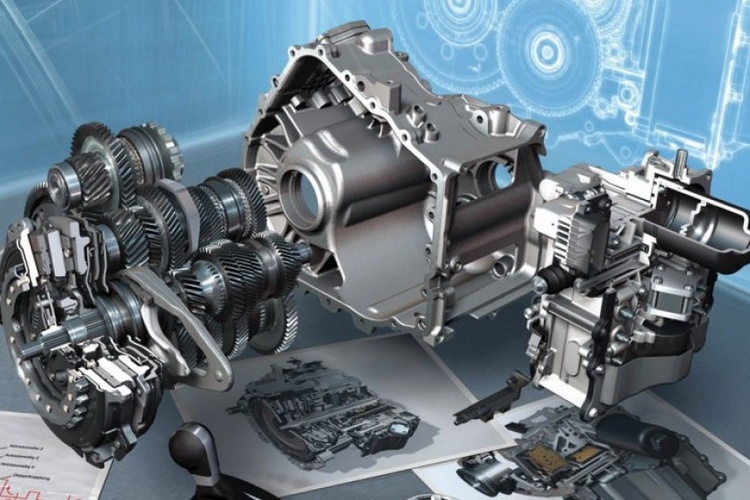
Classification and designation of motor oils, viscosity index
Content
There are many types of motor oils with different parameters, which are encrypted in symbols. In order to choose the right oil for an engine, you need to understand what is hidden behind the alphanumeric set, what classification is used and what characteristics this oil has.
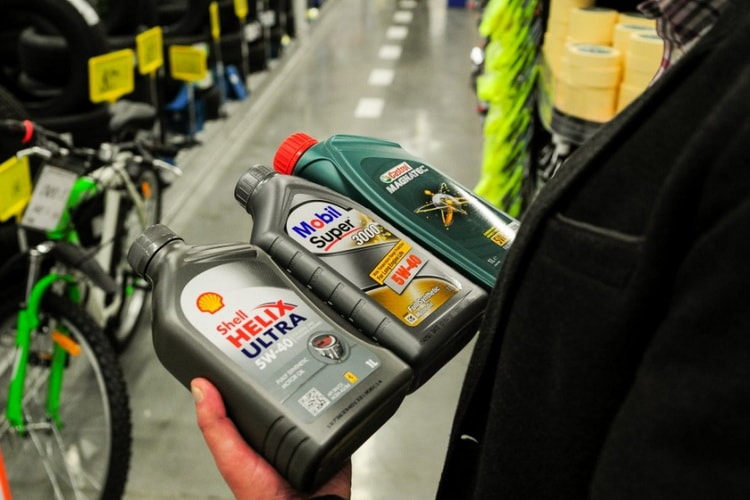
But we will understand everything in more detail in this article.
What is the role of oil in a car
The original function of engine oil was to lubricate the crankshaft journals, get rid of wear by-products, and lower temperatures by escaping fluid into the engine sump.
In the modern auto industry, the functions of motor fluids have become noticeably wider and the composition has changed for the implementation of new functions.
Basic functions of engine oil:
- protection of parts and working surfaces from friction due to the formation of a thin stable film on them;
- prevention of corrosion;
- engine cooling by draining the working fluid into a sump located at the very bottom of the engine;
- removal of mechanical wear waste from places of increased friction;
- removal of products of combustion of the fuel mixture, such as soot, soot and others.
Various additives are added to the main component of engine oil, which can remove contaminants, keep the film formed on rubbing parts, and perform other functions.
How motor oils are classified
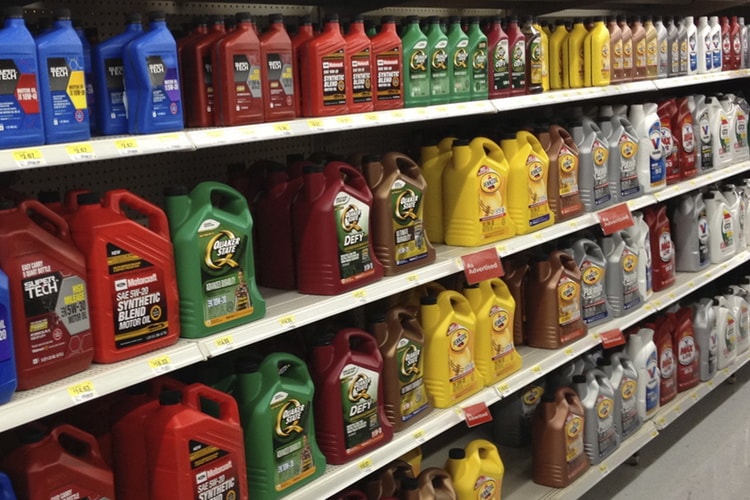

Engine developers select engine oils and requirements for them, depending on the design features and operating conditions.
You can fill in non-original motor fluids, but taking into account the quality class and quality groups, the manufacturer's recommendations. Properly selected non-original oil that meets all the manufacturer's criteria is not a basis for refusing warranty repairs in the event of an engine failure.
SAE
The world-recognized classification of oils for engines is SAE - viscosity gradation depending on the ambient temperature at which the engine operates.


With changes in external temperatures, the viscosity of the working fluid changes; at low temperatures, for optimal engine operation, the oil must remain fluid enough, and at high temperatures, thick enough to protect the engine.
According to SAE standards, engine oils are divided into seventeen classes from 0W to 60W.
Among them are eight winter ones (the first numbers are 0; 2,5; 5; 7,5; 10; 15; 20; 25) and nine for operation in the summer (2; 5; 7,5; 10; 20; 30; 40; 50; 60).
The division of both W numbers indicates the all-weather use of motor fluids.
The most common viscosity indices in Russia for a cold engine start (the first digits are temperature) are:
- 0W below -35°C;
- 5W to -30°C;
- 10W to -25°C;
- 15W to -20°C;
- 20W to -15°C.
The most common second numbers of indices in Russia characterizing the maximum external temperature are:
- 30 +25°C;
- 40 from +30°C to +45°C (depending on the first numbers - at 0W +30°C, at 5W +35°C, at 10W +35°C, at 15W and 20W +45°C).
In moderately cold winters and not hot summers, it is recommended to fill in 10W oil, as it is more universal, suitable for many cars. In very cold winters, a working fluid with an index of 0W or 5W should be filled in.
Modern engines with a mileage of no more than 50% of the planned resource require oil with a low viscosity.
API
API classification implies the breakdown of working fluids into two categories - "S" for gasoline engines and "C" for diesel engines. For motor oils suitable for both gasoline and diesel engines, a double marking through a fraction is used, for example, SF / CH.
Next comes the subdivision according to the level of performance (second letter). The further the second letter in order in the alphabet, the better such engine oils ensure the operation of the motor and reduce fluid consumption for waste.
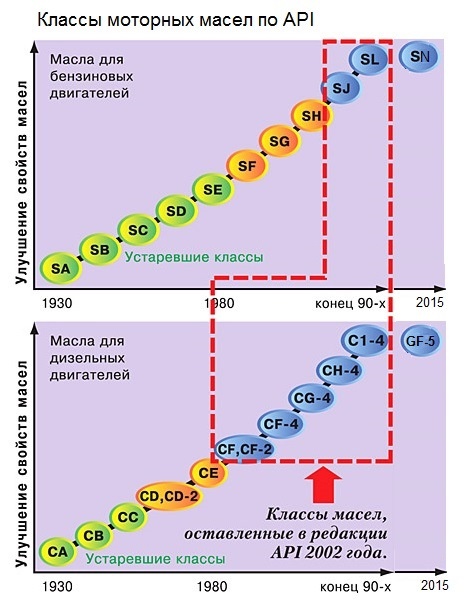

Classes of machine oils for gasoline engines by quality depending on the year of manufacture:
- SN for engines of modern cars with a high environmental class and energy saving;
- SM since 2004;
- SL since 2000;
- SJ since 1996;
- SH since 1993
SN class oils are recommended to replace earlier ones.
Classes of motor fluids for diesel engines by quality depending on the year of manufacture:
- CJ since 2006, to ensure maximum protection of the environment from harmful emissions into the atmosphere;
- CL since 2002, taking into account the environmental standards of 2002, and with the end of PLUS introduced in 2004 with increased environmental requirements in 2004;
- CH since 1998, for operation at high speeds, taking into account the environmental standards of 1998;
- CG since 1995, for working conditions under increased loads and high-speed modes;
- CF-2 for engines not with direct injection from 1994 onwards, CF-4 from 1990 onwards. for engines operating in high-speed modes;
- CE since 1993 for working conditions under high loads.
The number 2 or 4 through a hyphen indicates a two-stroke or four-stroke engine. All modern cars have a four-stroke engine.
Motor fluids of classes SM and SN are suitable for turbocharged engines.
ACEA
The ACEA classification is the European analogue of the API.
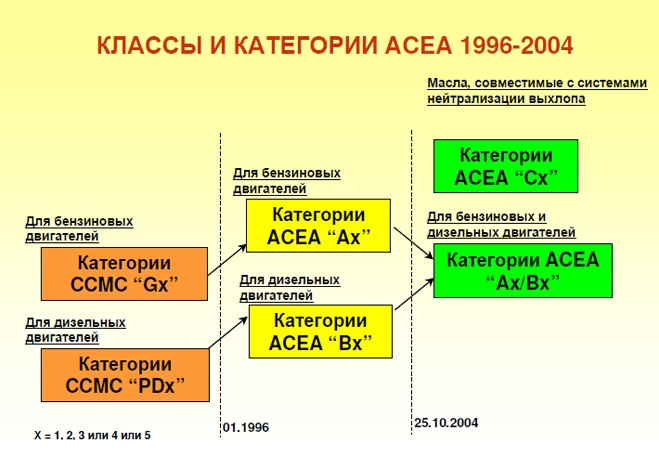

In the most recent 2012 edition, engine oils are divided into categories:
- A/B for petrol (A) and diesel (B) engines;
- C for diesel and gasoline engines with an increased environmental class and the presence of particulate filters and catalytic converters;
- E for diesel engines of heavy vehicles.
Classes and main characteristics according to the latest edition:
- A1/B1 are designed for use in gasoline and diesel engines of passenger cars, extended drain intervals, low coefficient of friction;
- A3/B3 are designed for use in highly accelerated gasoline and diesel engines of passenger cars, extended drain intervals, severe operating conditions, all-weather;
- A3/B4 are designed for use in highly accelerated gasoline and diesel engines, fuel economy;
- A5/B5 are designed for use in heavily loaded gasoline and diesel engines of passenger cars, extended replacement intervals;
- C1 and C2 are poured into highly accelerated diesel and gasoline engines of passenger vehicles, equipped with particulate filters and three-way converters, low coefficient of friction, fuel economy and extending the life of particulate filters and catalysts, differ in the content of various additives;
- C3 and C4 are designed for highly accelerated diesel and gasoline engines of passenger vehicles, equipped with particulate filters and three-way converters, extend the life of the particulate filter and catalyst, differ in the amount of additives;
- E6 are designed for heavy-duty diesel engines of trucks, equipped with particulate filters and converters, extended replacement interval;
- E7 are designed for diesel engines of trucks operating in especially severe conditions, equipped with recirculation systems with converters, without particulate filters, extended replacement interval;
- E9 are designed for the most modern diesel engines with increased load and the most stringent environmental requirements, both with and without a particulate filter, extended replacement intervals.
ILSAC
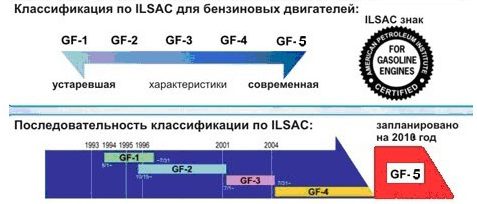

The ILSAC engine oil classification is designed to certify and license working fluids for passenger car engines manufactured in the USA and Japan.
Features of machine fluids according to ILSAC classification:
- energy saving;
- reduced fuel consumption;
- low viscosity;
- resistance to foaming;
- low volatility;
- protection against clogging of catalytic converters due to the low content of phosphorus.
Quality classes and year of introduction:
- GF-1 obsolete grade, commensurate with API SH, in terms of viscosity index SAE 0W, 5W, 10W at second numbers 30, 40, 50, 60;
- GF-2 since 1996, commensurate with API SJ, according to the viscosity index SAE 0W, 5W, 10W with second numbers 20, 30, 40, 50, 60;
- GF-3 since 2001, commensurate with API SL, the difference from GF-2 and API SJ is improved anti-wear and anti-oxidation performance and energy saving parameters;
- GF-4 since 2004 commensurate with API SM with energy efficient performance and improved cleaning and antioxidant properties, according to SAE indices - 0W-20, 0W-30, 5W-20, 5W-30, 10W-30, compatible with catalytic converters;
- GF-5 since 2010 differs from GF-4 in increased energy efficiency and anti-wear properties and compatibility with all environmental protection systems.
GOST
The classification of engine oils according to GOST 17479.1 was originally adopted in the USSR in 1985, but taking into account changes in the automotive industry and environmental requirements, the latest revision was in 2015.
Classification of machine oils according to GOST in accordance with international requirements
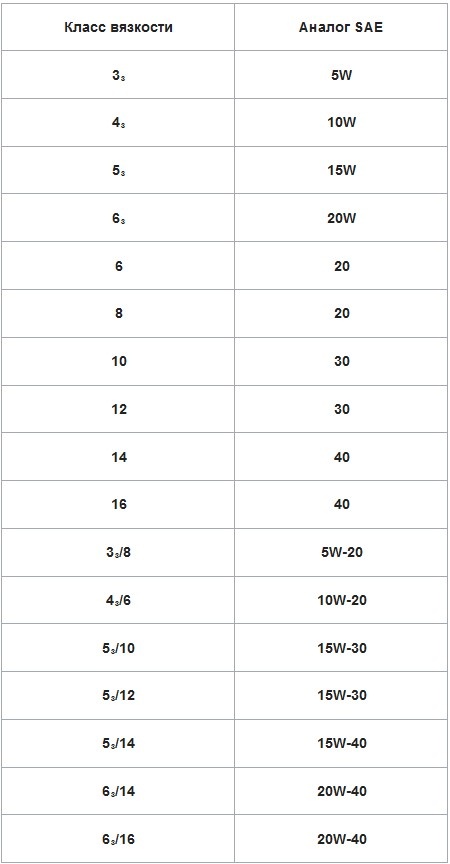

Depending on the field of application, machine oils are divided into groups from A to E.
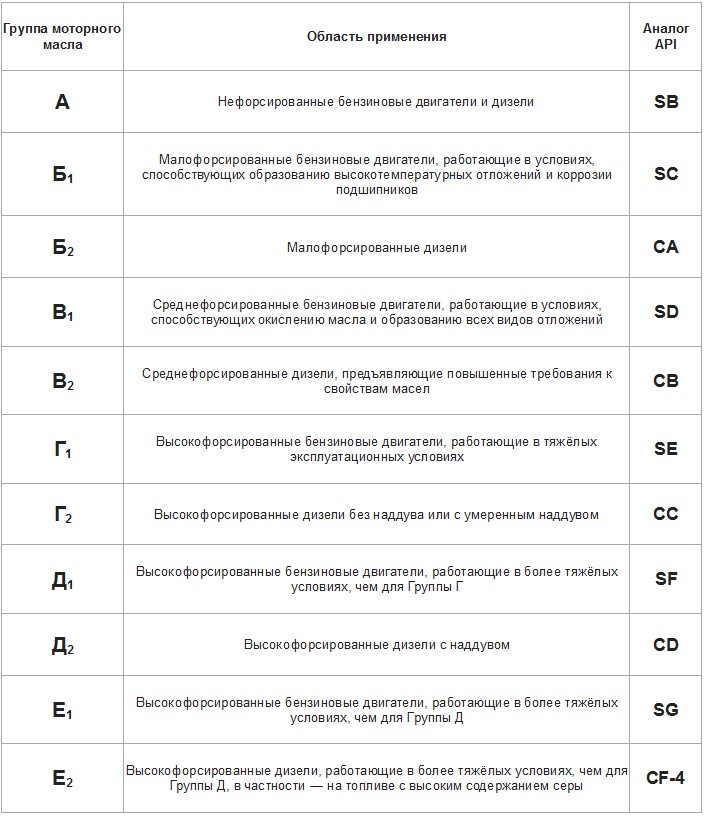

How to choose the right engine oil
Car manufacturers indicate the recommended engine oil and its tolerances in the operating instructions. It is possible to select oil according to the same criteria, while remaining under warranty. With a competent approach to the choice of oil, the characteristics of non-original oil will not be inferior to the original one, and in some cases surpass it.


Watch this video on YouTube
Oils should be selected according to SAE (viscosity) and API (by engine type and year of manufacture) classifications. Recommended tolerances for these classifications should be specified in the instructions.
Recommendations for the selection of motor oil by viscosity:
- with a vehicle mileage of no more than 25% of the pledged resource (new engine), it is required to fill in SAE 10W-40 or 5W-40 motor oils, regardless of the season;
- in a technically sound engine (mileage 26-74% of the pledged resource), it is recommended to fill in motor oils with a viscosity of 10W-40, 15W-40 - in the warm season, with a viscosity of 5W-30, 10W-30 - in the cold season, regardless of the season - 5W-40;
- in the old engine (mileage more than 76% of the pledged resource), it is necessary to fill in motor oils with a viscosity of 15W-40, 20W-40 - in the warm season, and 5W-40, 10W-40 - in winter, regardless of the season - 5W-40.
According to the API classification, motor fluids must be selected in class SM or SN for modern gasoline engines, for diesel engines not lower than CL-4 PLUS or CJ-4 for cars with EURO-4 and EURO-5 environmental classes.
What affects the wrong choice of engine oil
Incorrectly selected engine oil in some cases risks resulting in major trouble for the motor.
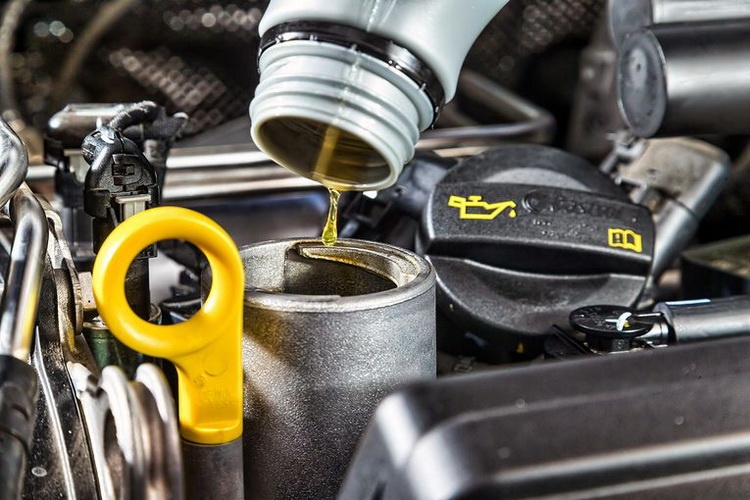

Counterfeit or low-quality engine oil can lead, at worst, to engine seizure, and at best, to a noticeable increase in oil consumption and its blackness at minimum mileage, to the formation of deposits in the engine and to reduce the planned engine mileage.
If you fill the engine with oil with a viscosity lower than recommended by the manufacturer, this can lead to increased consumption of engine oil, due to the fact that it will remain on the walls and increase waste. If the viscosity of the oil is higher than recommended by the manufacturer, then the wear of the oil scraper rings will increase due to the formation of a thicker film on the working surfaces.
Proper selection and purchase of high-quality engine oil will allow the engine to come out no less than the resource laid down by the manufacturers.
